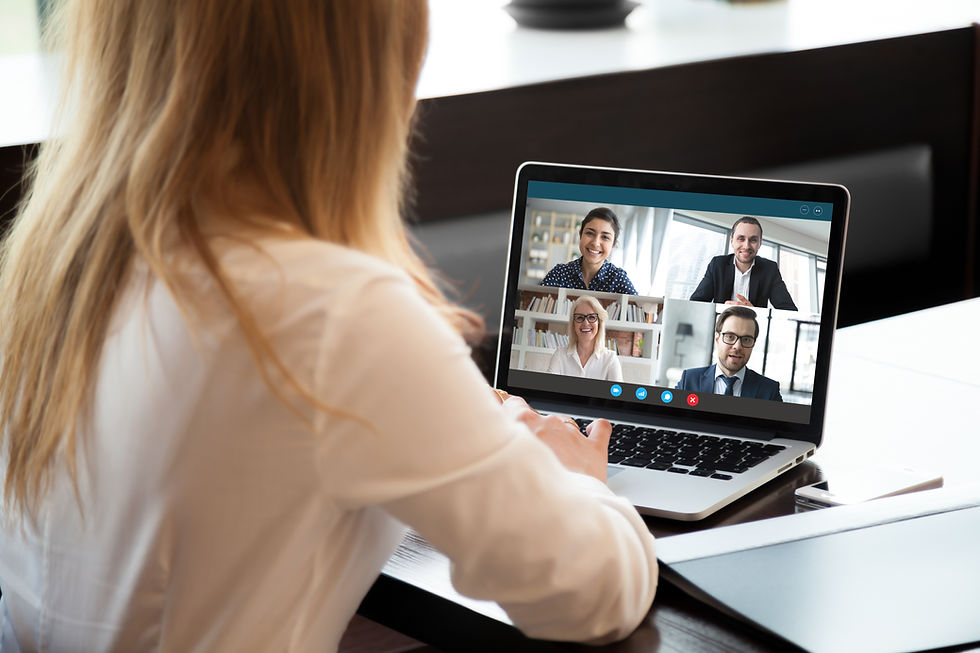THOUGHTS ON WHY ZOOM MEDIATION IS HERE TO STAY
- Deborah Drylie Esq.
- Apr 7, 2021
- 4 min read
Updated: Aug 7, 2021
For those of you who have participated in a Zoom mediation, think about your own assessment of it’s pros and cons. I suspect, for most of you, the pros outweighed the cons which is why you agreed to proceed via Zoom to begin with. However, the result may be what dictates your willingness to embrace Zoom, into the future. Whether the experience and result was positive or negative, it is the belief of this Mediator that some permutation of Zoom is here to stay, well after the Covid crisis is in our collective rear view mirror. Accordingly, here are thoughts on how to improve your Zoom experience for what may be, years to come. For a recap of recent history, once the court system closed down in the immediate aftermath of the Covid crisis, members of The Resolution Center met to discuss what we could do and should do regarding pending mediations. A collective decision was reached to try to accommodate parties and their mediation needs in a safe and effective manner. This was the one thing we could control, and do our part to keep the wheels of justice turning ever so slowly. Plus, we realized the pandemic was creating economic uncertainty on many fronts and trying to help parties resolve a matter may allow for some economic relief which could otherwise takes months or years to achieve. We all agreed that ‘in person’ mediations are not only the model required by the Rules of Civil Procedure, but ‘in person’ mediations are the most effective format for a mediator to relate to the parties, to empathize with the parties and when necessary, have the tough talk needed to break through disagreements between the parties. So, how do we mimic these mediation needs via the computer? Quick and easy answer: both the Mediator and all parties need to treat the Mediation as though it were happening in person. What does this mean? To begin with, make sure your clients are familiar with the Zoom format and process well in advance. Make sure the clients or party representatives can attend and participate via the Zoom format. And, make sure that participation is not just via phone call, but also by video. Given the likelihood that a Plaintiff has never attended a mediation before, it is imperative that they attend a Zoom mediation by video. If they do not possess a device to do so, then make arrangements for them to come to your office so you can appear together. While counsel may not prefer this arrangement, the mediator will appreciate it. Having now collectively handled approximately 300 Zoom mediations, the TRC mediators agree rapport building is one of the most helpful tools to break through negotiation log jams. Being able to make eye contact and demonstrate empathy and interest in the Plaintiff as a person as well as their case is far more impactful when the mediator can physically see the Plaintiff. Even if, as the mediator, we can communicate effectively on the phone alone, video interaction improves the mediators effectiveness exponentially, and ultimately improves the chances of claim resolution. Given technical challenges, if video participation by a party or representative is simply not an option, speak to the other side to discuss alternative arrangements. This is obviously something which requires forethought, well in advance of the scheduled mediation. As the pandemic timeframe advances, you may have already dealt with Zoom logistics in arranging for a clients Zoom deposition. Be prepared to make those same arrangements for the mediation. The preference is to simply make arrangements for the party or representative to appear with counsel. But, think outside the box - if travel is an issue perhaps your client could join in from their place of work, or even a friend or family members home. If it is a defense representative who has zoom limitations and a power point presentation will be shown, send it to the carrier or counsel in advance of the mediation. This holds true if there are any exhibits you want to share during the course of the mediation as well. Be prepared in advance to screen share the documents rather than waiting to ‘figure it out’ during the mediation itself. The bottom line when it comes to a Zoom Mediation is that you should treat it like an old fashioned in-person proceeding. Spend just as much time preparing for it as you would an in-person mediation but do so sooner than you usually would, in order to give time to address connection and attendance issues. We are now past the initial hiccups of Zoom application to the mediation process and we all need to treat it as the formal proceeding it was intended to be. This means do not do what some of us have seen: attend mediation while leaning up against your headboard, have your client's boyfriend walk barechested past the computer screen, appear wearing a tube top, and for goodness sakes, getting a haircut and colored while on Zoom. Yes, this actually happened (albeit during a deposition rather than a mediation). Finally, make the mediators job a bit easier and stress that confidentially is a requirement so they should be in a private location, free of inquiring eyes and ears. If that discussion regarding location does not begin until the mediation begins, there may be no time to kick people out of a room, out of a house, etc. While none of us had ever heard of Zoom before mid March of 2020, we quickly became proponents of this format. It has proven to be more successful than we expected and as our experience with Zoom has grown, so has our confidence in it’s permanent role in future mediations.



Comments